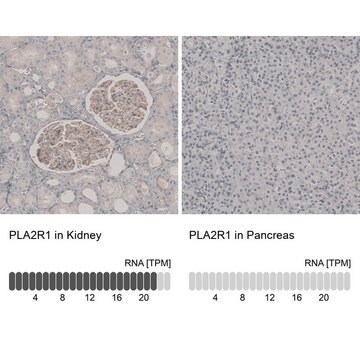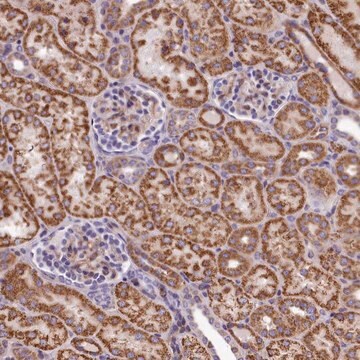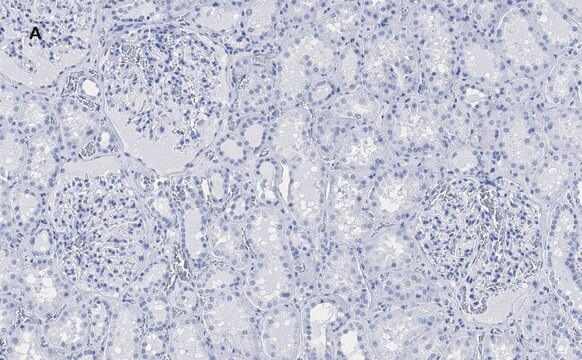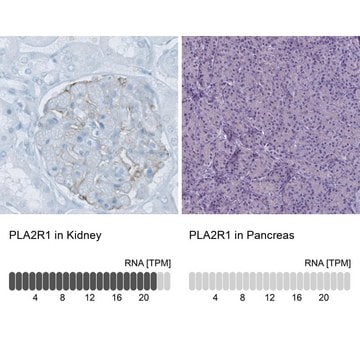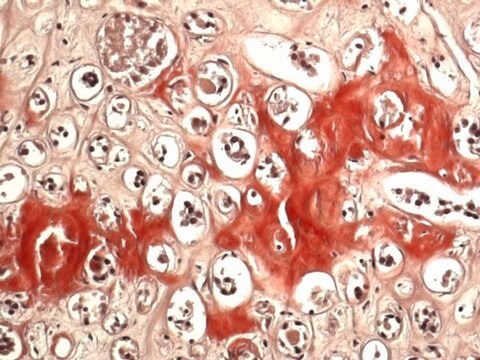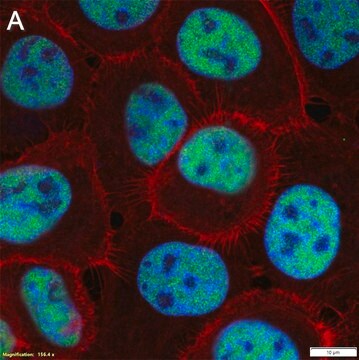MABC942
Anti-PLA2R Antibody, clone 5F5.1
clone 5F5.1, from mouse
Synonym(s):
PLA2-R, PLA2R, Secretory phospholipase A2 receptor, 180 kDa secretory phospholipase A2 receptor, C-type lectin domain family 13 member C, M-type receptor
About This Item
WB
western blot: suitable
Recommended Products
biological source
mouse
Quality Level
antibody form
purified immunoglobulin
antibody product type
primary antibodies
clone
5F5.1, monoclonal
species reactivity
human
technique(s)
immunohistochemistry: suitable
western blot: suitable
isotype
IgG1κ
NCBI accession no.
UniProt accession no.
shipped in
wet ice
target post-translational modification
unmodified
Gene Information
human ... PLA2R1(22925)
General description
Specificity
Immunogen
Application
Immunohistochemistry Analysis: A 1:250 dilution from a representative lot detected PLA2R in human kidney tissue.
Quality
Western Blotting Analysis: 0.5 µg/mL of this antibody detected PLA2R in 10 µg of human lung tissue lysate.
Target description
Physical form
Other Notes
Not finding the right product?
Try our Product Selector Tool.
recommended
Storage Class Code
12 - Non Combustible Liquids
WGK
WGK 1
Flash Point(F)
Not applicable
Flash Point(C)
Not applicable
Certificates of Analysis (COA)
Search for Certificates of Analysis (COA) by entering the products Lot/Batch Number. Lot and Batch Numbers can be found on a product’s label following the words ‘Lot’ or ‘Batch’.
Already Own This Product?
Find documentation for the products that you have recently purchased in the Document Library.
Customers Also Viewed
Our team of scientists has experience in all areas of research including Life Science, Material Science, Chemical Synthesis, Chromatography, Analytical and many others.
Contact Technical Service
